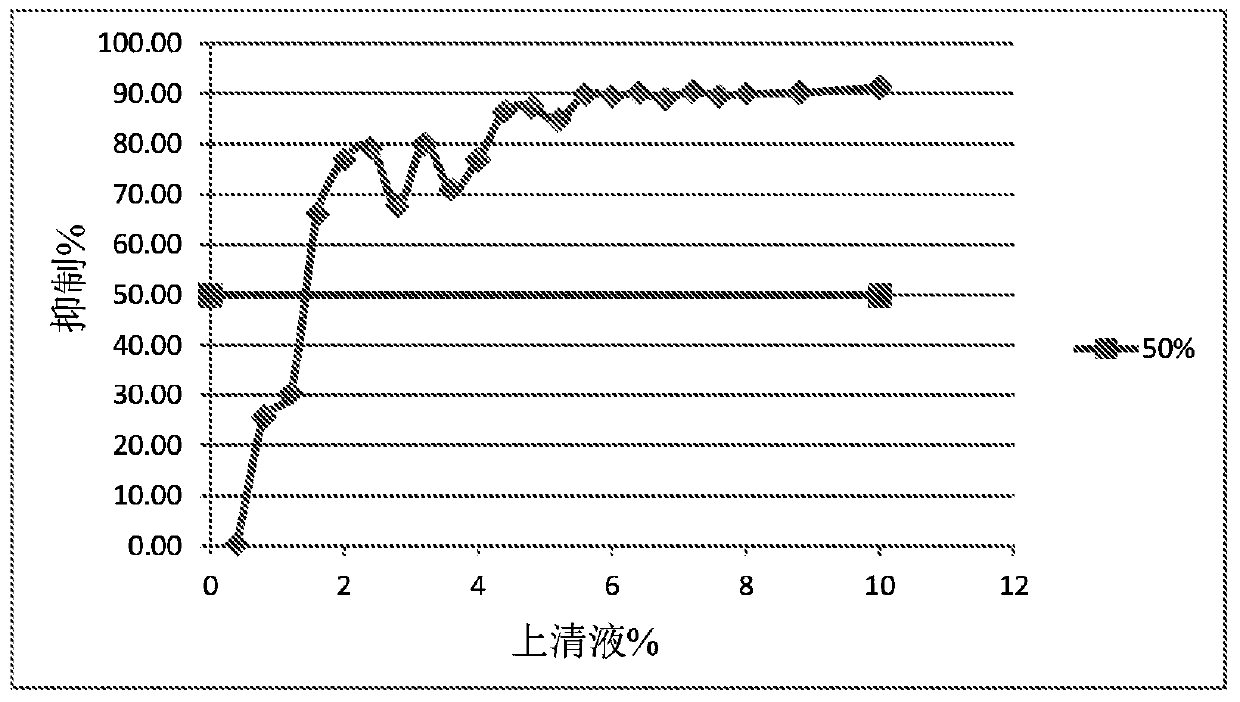Algicidal organisms
A technology of algae and composition, which is applied in the field of composition to control various algae, and can solve problems such as difficulty in success
- Summary
- Abstract
- Description
- Claims
- Application Information
AI Technical Summary
Problems solved by technology
Method used
Image
Examples
example
[0067] The compositions and methods described herein are further illustrated in the following non-limiting examples. The examples are merely illustrative of various embodiments and do not limit the claimed invention in terms of materials, conditions, weight ratios, process parameters, etc. recited herein.
example 1
[0069]Beauveria bassiana O379 (NRRL-67406) is a fungus that was discovered as an initial hit on Pesudokirchnneriella subcapitata, and its activity in Pesudokirchnneriella subcapitata and Chlamydomonas reinhardtii) are verified on both. The microorganism was identified by its ITS sequence as Beauveria bassiana O379 (NRRL-67406). Beauveria bassiana O379 (NRRL-67406) had the broadest activity of any algicide for the validated hit. It was active against all species it had been screened against and was greater than 75% active against all species except Microcystis aeruginosa. However, as shown in Table 1, the LC50 of Beauveria bassiana O379 (NRRL-67406) was somewhat higher than other top hits, specifically higher for green algae.
[0070] Beauveria bassiana O379 (NRRL-67406) had moderate control over Anabaena spp. but no control over overall chlorophyll A content when tested in a system simulating an algae-infested rice field.
[0071] Table 1 Summary of antibacterial spectrum a...
example 2
[0102] It was found that Bacillus brevis HNYM3, O989 (NRRL-B67408) was successfully verified on Chlamydomonas reinhardtii, and was identified as Bacillus brevis HNYM3, O989 (NRRL-B67408) by 16S rRNA. The fermented supernatant of Bacillus brevis HNYM3, O989 (NRRL-B67408) was tested on a broad spectrum of algal species and found to have a very broad spectrum of activity. The only species tested in which the Bacillus brevis was not active was the green alga Scenedesmus tetracerus. Its activity was greater than 75% against all remaining species except Oscillatoria teniella. As shown in Table 8, the LC50 of Bacillus brevis HNYM3, O989 (NRRL-B67408) was moderately low.
[0103] When tested in a system simulating an algae-infested rice field, Bacillus brevis HNYM3,O989 (NRRL-B67408) showed no significant change in chlorophyll A content and phycocyanin at four and seven days after treatment. content increased significantly. This suggests that Bacillus brevis HNYM3,0989 (NRRL-B67408...
PUM
 Login to View More
Login to View More Abstract
Description
Claims
Application Information
 Login to View More
Login to View More - R&D
- Intellectual Property
- Life Sciences
- Materials
- Tech Scout
- Unparalleled Data Quality
- Higher Quality Content
- 60% Fewer Hallucinations
Browse by: Latest US Patents, China's latest patents, Technical Efficacy Thesaurus, Application Domain, Technology Topic, Popular Technical Reports.
© 2025 PatSnap. All rights reserved.Legal|Privacy policy|Modern Slavery Act Transparency Statement|Sitemap|About US| Contact US: help@patsnap.com



